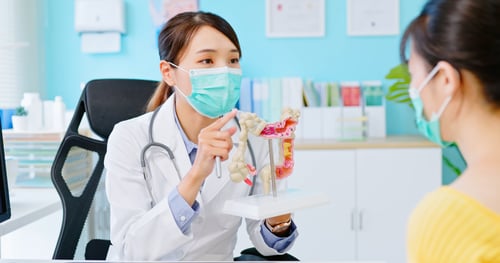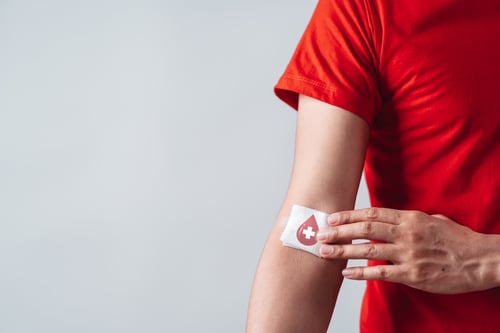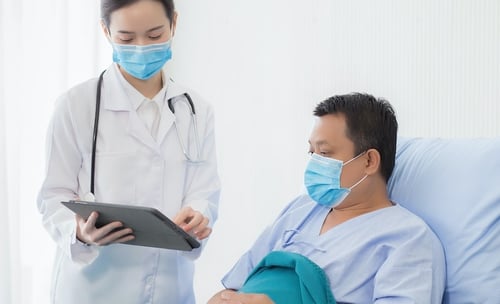Polycystic ovarian syndrome (PCOS) and ovarian cysts are two distinct conditions that are often confused due to overlapping symptoms. While PCOS cysts are a type of ovarian cyst associated with hormonal imbalances, not all ovarian cysts are related to PCOS. Understanding the differences between PCOS and ovarian cysts is crucial for effective diagnosis and treatment. This blog explores the unique features, symptoms, and treatment options for both conditions.
While ovarian cysts and PCOS can have similar symptoms in some cases, they are two very different conditions. Women can have multiple ovarian cysts and not suffer from PCOS; however, multiple ovarian cysts are also a symptom of PCOS.
What is PCOS?
Women with PCOS often suffer from a hormonal imbalance where they produce a high amount of androgen, the male reproductive hormone. This imbalance affects the ovaries, which usually produce oestrogen and progesterone, two hormones crucial for maintaining the menstrual cycle. Consequently, the menstrual cycle gets disturbed, resulting in missed or fewer periods.
According to the NHS, the exact cause is still uncertain, but abnormal hormone levels are thought to be the main contributing factor.2 Insulin resistance is also thought to be associated with Polycystic ovarian syndrome.3 Several risk factors worsen insulin resistance with obesity being the most important. Insulin resistance, especially combined with obesity, can result in diabetes mellitus, fatty liver and obstructive sleep apnoea. All these conditions are associated with an increased risk of PCOS.
According to the Rotterdam Criteria, the preferred diagnostic guideline for PCOS, two of the following criteria are required to make the diagnosis, namely:4
- Multiple Ovarian cysts, seen via ultrasound
- Menstrual cycle irregularities, with few or no ovulation
- Overproduction of androgens
Symptoms related to the overproduction of androgens include male-pattern hair loss, acne and hirsutism, which is defined as excess thick pigmented hair in the male distribution, usually seen on the upper lip, chin, chest and lower abdomen, though this pattern varies according to race.
PCOS Hormone Levels Chart
Women with PCOS often experience elevated levels of androgens and other hormonal imbalances. Below is a simplified chart to illustrate the differences:
| Hormone | Normal Levels | PCOS Levels |
| Androgens (e.g., testosterone) | Normal or low | Elevated |
| Insulin | Normal | Elevated (insulin resistance) |
|
LH Ratio |
~1:1 | Elevated (often >2:1) |
| Progesterone | Regular cycles maintain balance | Often low due to anovulation |
These hormonal disruptions contribute to PCOS symptoms such as missed periods, acne, hirsutism, and difficulty conceiving.
Difference between ovarian cysts and PCOS
The polycystic ovarian syndrome is a metabolic disorder associated with hormonal imbalance, excess androgen production and ovulation problems. Ovarian cysts are fluid-filled sacs in the ovary that do not necessarily alter the ovulation process. They can be asymptomatic and have no other associated complications.
Can you have PCOS without cysts?
Yes, you can have PCOS without ovarian cysts. PCOS is primarily diagnosed based on symptoms such as irregular periods, elevated androgen levels, and ovulatory dysfunction, as per the Rotterdam Criteria. The presence of cysts is not mandatory for a PCOS diagnosis.
Normal Ovary vs PCOS
- Normal Ovary: A typical ovary produces eggs regularly and shows no cystic growths during an ultrasound.
- PCOS Ovary: Ovaries may appear larger, with multiple small cysts (often called “string of pearls”) resulting from halted egg maturation. This structure is due to hormonal imbalances disrupting normal ovulation.
Understanding these visual differences can help clarify confusion between ovarian cysts and PCOS.
Is polycystic ovarian syndrome (PCOS) treatable?
The main treatment goals for patients with Polycystic ovarian syndrome include management of the symptoms associated with high androgen levels, the underlying metabolic abnormalities and reduction of the risk of diabetes and other cardiovascular diseases. The treatment plan is also personalised to the patient, depending on the wish for pregnancy, and usually begins with lifestyle modifications.
Lifestyle modifications
In general, diet and exercise to achieve weight loss are usually the first steps for overweight and obese women with PCOS. This would decrease symptoms associated with high androgen levels, insulin resistance and will also improve rates of fertility. Though the data on improvements in hirsutism is limited, even a mild 5-10% decrease in body weight can restore ovulation cycles.
Medications
Your doctor may recommend medical therapy to treat polycystic ovarian syndrome to regulate the menstrual cycle, ovulation, induce conception and decrease the risk of insulin resistance. Some of the commonly prescribed medications include:5
Birth control pills
Contraceptives help to restore the hormonal balance, which can help with menstrual irregularities and ovulation problems. Birth control pills may also be useful in treating acne and excess body hair that may be present. They are also crucial for reducing the risk of endometrial cancer, which can be a consequence of long-term hormonal imbalance.
Metformin
Metformin reduces the complications associated with insulin resistance. It restores ovulatory menses in approximately 30 to 50 percent of women with PCOS. It is usually given as a second line of therapy.
Ovulation inducing medications
For patients wanting to get pregnant, they may also be given various types of medications to induce ovulation. There are different types of medications that doctors may prescribe to induce ovulation with a stepwise approach to deciding which medication to give, each with its risks and benefits.
Hair removal treatment
One of the characteristic features of PCOS is excessive hair growth. Certain medications, including birth control and antiandrogen pills, may be prescribed to women with PCOS to reduce unwanted hair growth.
Surgical options
When lifestyle changes and medical therapy fail to induce ovulation for patients wanting to get pregnant, patients may consider surgical options. Laparoscopic ovarian drilling (LOD) consists of internal heating or lasering of the ovaries to help reduce the production of androgens. Given the risks of the surgical procedure, however, medications are preferred over surgical options.
Is PCOS dangerous?
While PCOS itself isn’t life-threatening, untreated PCOS can lead to serious complications, including:
- Insulin resistance, increasing the risk of type 2 diabetes.
- Cardiovascular disease, due to metabolic syndrome and obesity.
- Endometrial cancer, linked to irregular ovulation and hormonal imbalances.
What is an ovarian cyst?
Ovarian cysts are fluid-filled sacs on the ovaries that can burst and cause sudden, sharp abdominal pain along with bleeding. Ovarian cysts are quite common among women who have regular periods. Sometimes, ovarian cysts can have no symptoms at all. Ovarian cysts can be 'functional', with a follicle developing during the menstrual cycle but not rupturing to release an egg. Ovarian cysts can also be caused by abnormal cell growths in the ovaries, both benign and cancerous, in addition to severe pelvic infections.
PCOS cyst rupture
While not all PCOS cysts are prone to rupture, cyst rupture can occur in some cases, leading to:
- Sharp pelvic pain, often on one side
- Nausea and vomiting
- Abdominal bloating
- Light bleeding or spotting
If you experience these symptoms, it’s essential to seek medical attention promptly to rule out complications.
How is an ovarian cyst diagnosed?
Ovarian cysts are usually asymptomatic. Some women experience a dull ache in the lower abdomen on the side of the cyst which comes and goes. However, symptoms are usually more severe if the cyst ruptures, which may include:
- Sharp pelvic pain on the side of the cyst
- Painful sexual intercourse
- Painful bowel movements
- Nausea and vomiting
- Bloated or swollen abdomen
The presence of the above symptoms warrants a trip to the doctor's office to exclude complications associated with ovarian cysts. The doctor will then usually perform an ultrasound to view the ovaries and confirm the presence of the cysts. Additionally, a blood test to check for hormonal imbalance and CA-125 can provide further information about the possibility of endometriosis or ovarian cancer. As these are not routine check-ups, the doctor will decide which tests to perform based on the story and the physical examination.
Treatment of ovarian cysts
Treatment of ovarian cysts does not have to start immediately after a positive diagnosis. Your doctor may recommend waiting for a while before initiating therapy, as most ovarian cysts are of the functional type and will resolve on their own. The treatment plan for ovarian cysts depends on the following criteria:6
- Whether the patient has reached menopause
- Presence or absence of symptoms
- Size and appearance of the cyst
After careful assessment of the criteria, the doctor may consider the following treatment:6
- The prescription of oral contraceptives to stop ovulation and thus prevent new ovarian cysts' progression and development;
- Measurements of CA 125, the cancer marker for ovarian cancer, to monitor the risk.
- Surgical removal of the cysts or oophrectomy if the cysts are large and are suspicious of cancer.
PCOS and ovarian cysts are two different conditions that are often confused. It is important to understand the differences between them. You should visit your gynaecologist or family doctor if you are experiencing any of the abovementioned symptoms. It may be a gynaecological or metabolic disorder or nothing to worry about, but visiting your doctor will give you the reassurance you need.
References
-
Bozdag, G., Mumusoglu, S., Zengin, D., Karabulut, E., & Yildiz, B. O. (2016). The prevalence and phenotypic features of polycystic ovary syndrome: a systematic review and meta-analysis. Human Reproduction, 31(12), 2841-2855.
-
González, F., Considine, R., Abdelhadi, O., & Acton, A. (2019, March 1). Saturated fat ingestion promotes lipopolysaccharide-mediated inflammation and insulin resistance in polycystic ovary syndrome. Retrieved March 09, 2021, from https://www.ncbi.nlm.nih.gov/pubmed/30590569
-
NHS. (n.d.). NHS - Polycystic Ovarian Syndrome (PCOS) - Causes. Retrieved March 09, 2021, from https://www.nhs.uk/conditions/polycystic-ovary-syndrome-pcos/causes/
-
Rotterdam ESHRE/ASRM‐Sponsored PCOS Consensus Workshop Group. (2004). Revised 2003 consensus on diagnostic criteria and long‐term health risks related to polycystic ovary syndrome (PCOS). Human reproduction, 19(1), 41-47.
-
Yau, T. T., Ng, N. Y., Cheung, L., & Ma, R. C. (2017). Polycystic ovary syndrome: A common reproductive syndrome with long-term metabolic consequences. Hong Kong Medical Journal. doi:10.12809/hkmj176308
-
NHS. (n.d.). NHS - Ovarian Cyst - Treatment. Retrieved March 09, 2021, from https://www.nhs.uk/conditions/ovarian-cyst/treatment/
 Central General Practice
Central General Practice
 Repulse Bay
Repulse Bay
 Clearwater Bay
Clearwater Bay
 BodyWorX Clinic
BodyWorX Clinic
 Central Specialist Clinic
Central Specialist Clinic
 MindWorX Clinic
MindWorX Clinic
 Partner Clinics
Partner Clinics
 Family Clinic
Family Clinic
 OT&P Annerley Midwives Clinic
OT&P Annerley Midwives Clinic








